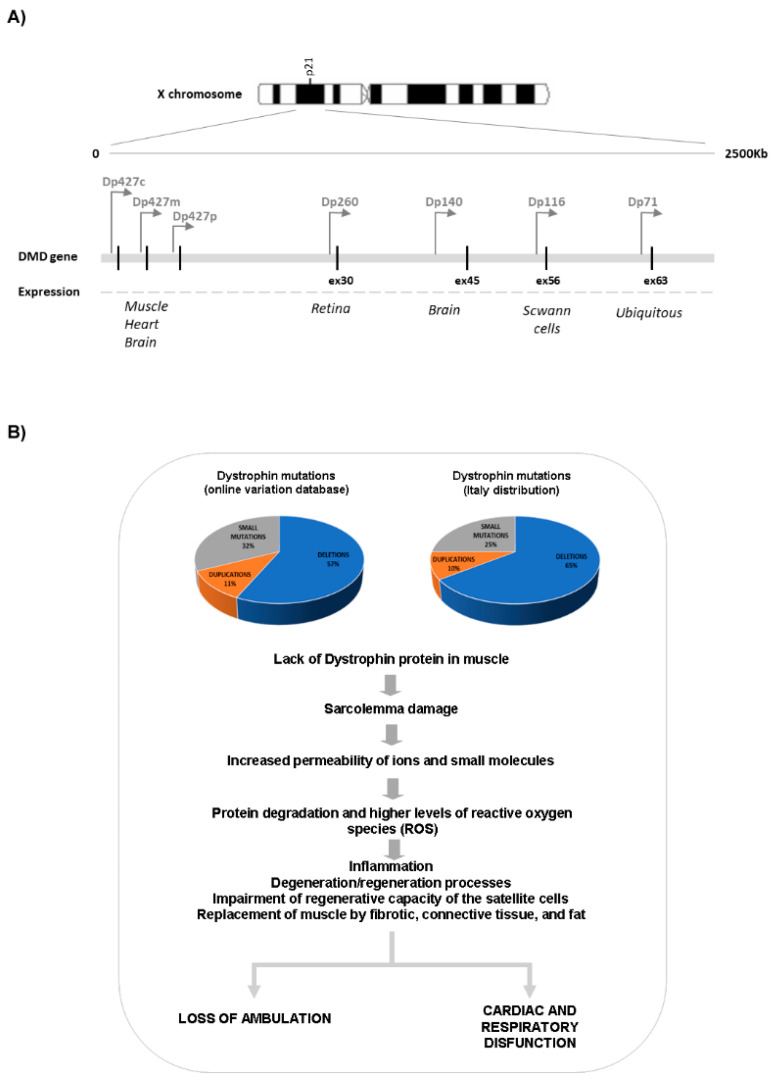Figure 1.
Dystrophin isoforms and effect of DMD mutations. (A) Schematic representation of dystrophin isoforms. The picture shows the localization of each promoter along the DMD gene (arrows) and the tissue specificity. (B) The two graphs report the frequency of deletions, duplications, and small mutations as described both in many reports (left graph; [9,10,11] and in a large, Italian DMD gene mutation study recently published by the authors (right graph, [3])). As summarized in the bottom of the panel, the DMD mutations lead to the absence of dystrophin protein, inducing the activation of several biological processes that cause the progressive muscle weakening and loss of ambulation, together with respiratory and cardiac complications.

